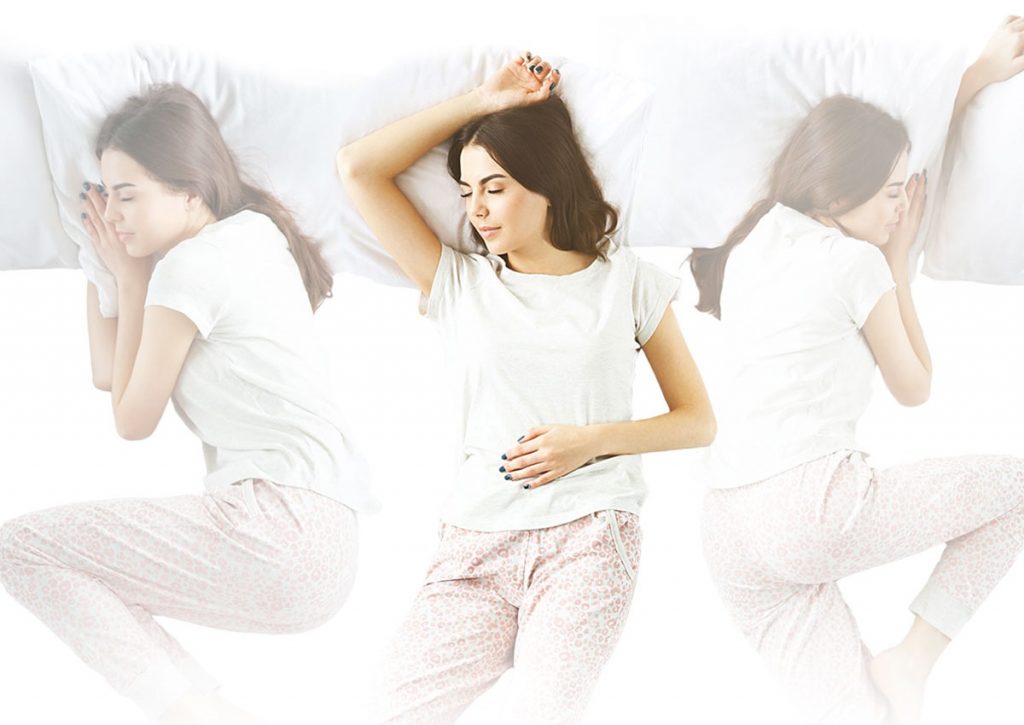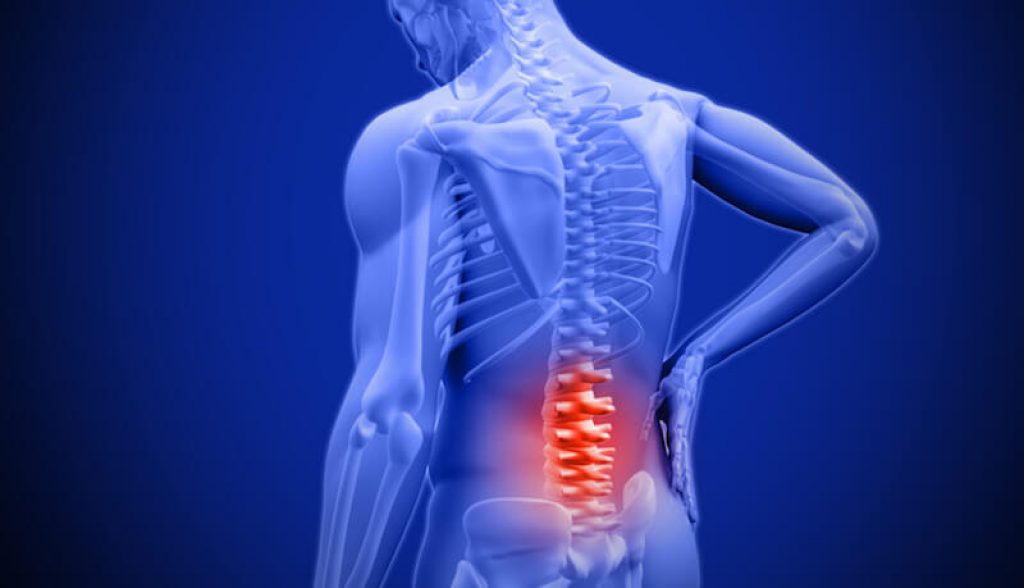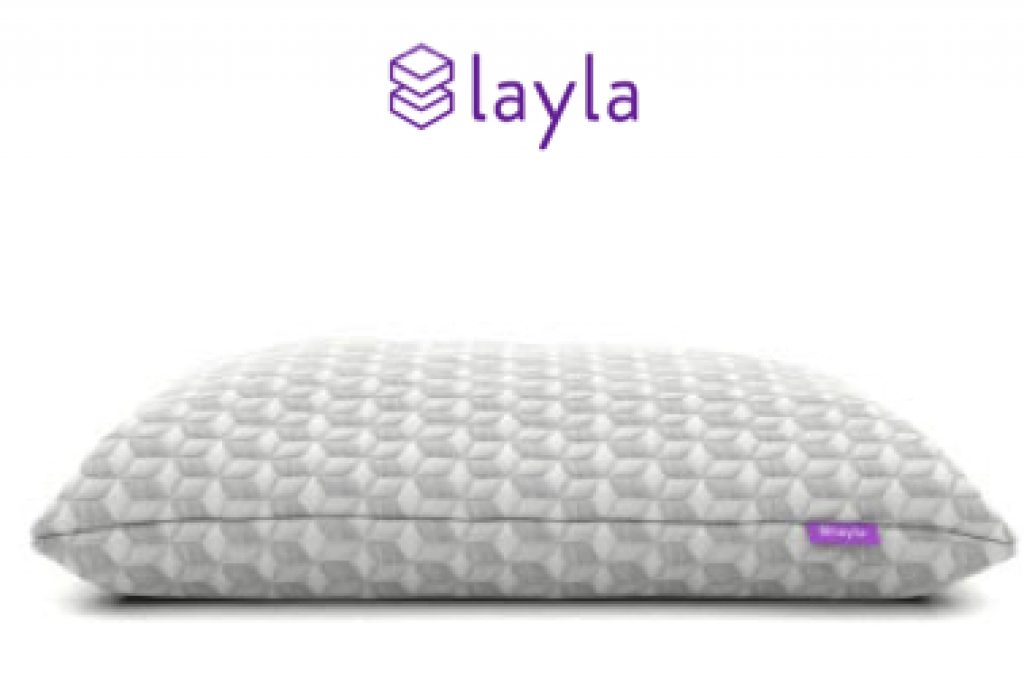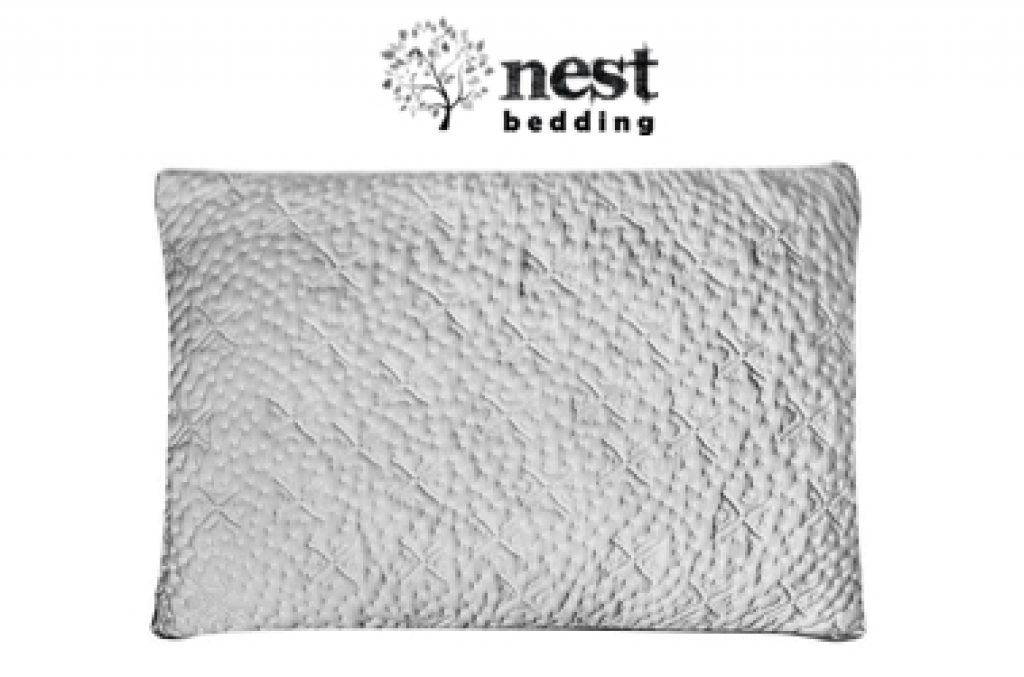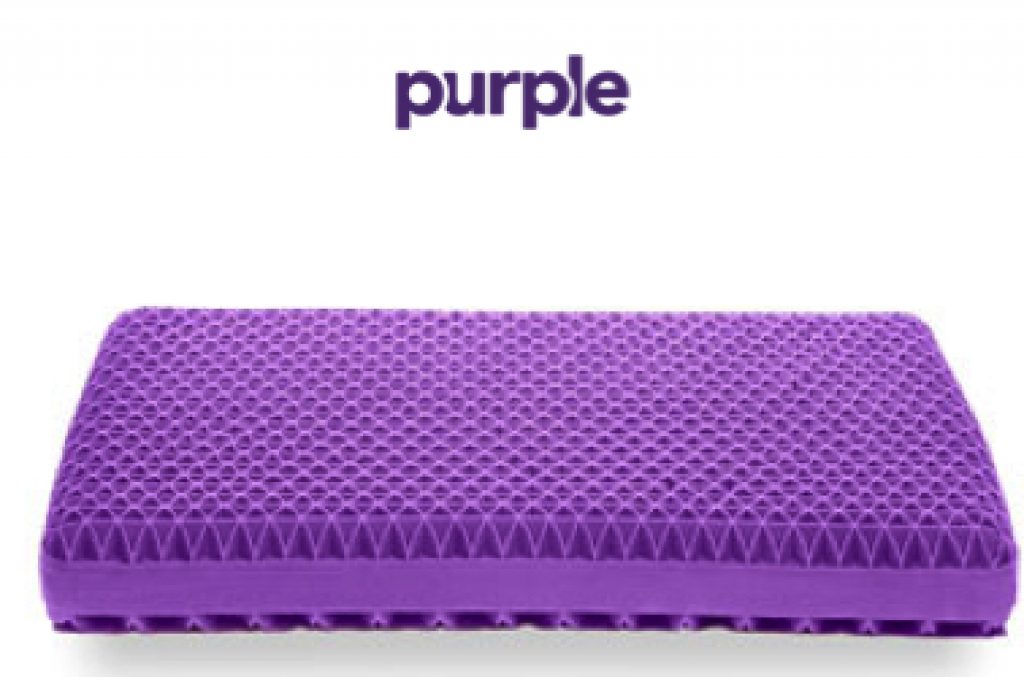
Sleep is the elixir of life; it affects our moods, our immune systems, the health of our hearts and more. In essence, it impacts everything we do because the body relaxes at night when we are asleep, and the brain uses this time of decreased activity to recalibrate and organize memories, affecting our long and short-term memory retention.
So, it makes sense to do our utmost to make sure that we get the recommended amount of quality sleep to feel good and function properly. The average adult human needs something in the region of eight hours of uninterrupted sleep. Of course, as with everything, there are exceptions to the rule with some people requiring only about five hours per night.
No matter the amount of time you need, when you are asleep it needs to be perfect. And a pain in the neck can have a hugely detrimental impact on the way we rest. The best way to solve a neck pain problem is a top-quality pillow and mattress that work together as a team.
In this article, we are going to look at our favorite pillows for neck pain and provide a purchasing guide that works.
Feel free to check out our complete buyer’s guide for overall top-rated pillows on the market.
Why Do I Suffer From Neck Pain?

Do you suffer from pain or a stiff neck? Almost every second adult has already experienced this problem at one point in his or her lives. But how does this pain develop and what can you do about it?
Neck discomfort has long since become an affliction of the people, and the primary cause is our predominantly sedentary society. If you look at the evolution of man, you will first notice the transition towards the upright gait known to humans. While the ancestors of man were still ape-like and bent over, the upright gait with a straight spine has become established in modern man.
Mass digitization and the way we work, which are performed exclusively while sitting, are having an adverse effect on the posture and the muscles in your back, shoulders, and neck. As a result, the uppermost vertebrae curve and the head sags horizontally forward.
As very few activities involve physical variety, the malposition and permanent tension in the neck area has become almost commonplace. The initial pull develops, in extreme cases, into a throbbing pain, which can also cause tension in the chest muscles.
As we have seen, our lifestyles are the primary cause, and that involves the way we sleep. If the cushion and mattress do not support the neck in bed, spinal alignment is out of whack – more on that later.
Your Mattress May Be the Problem
The cause of neck discomfort is primarily tension in the muscles and connective tissue – fascia of the neck, which we usually contract due to ‘stupid habits’ and poor posture. The major causes of these malpractices leading to neck pain are external factors at the workplace, e.g., sitting too deep, too high or too far away from worktops and the wrong position of monitors. Also, prolonged periods of stress, pressure and fearful anticipation may lead to neck tension, as one feels stressed when the neck is tense and is in a malposition.
Pillows and mattresses
Since many people who are plagued with neck pain wake up in the morning with a particularly stiff and painful neck, and many feel it is due to their sleeping position, which is affected by the wrong mattress and pillows. Most of us then start to change our pillows and the mattress, unfortunately with little success.
In fact, the morning aggravation of the symptoms is due to the following fact: the muscles and connective tissue/fascia contract by about 7% during the night, and this all over the body. The main reason for this is the relative lack of physical activity at night. That’s why every cat stretches when it wakes up. The wrong mattress and pillow aggravate the symptoms, making them worse.
Shoppers Guide to Cervical Pillows
Materials You Can Sleep On
Fortunately, there are many different materials available for pillows, and some of them work really well if you have pain in the cervical spine. Latex is a particularly good element because it is durable, breathable and it adapts quickly to changes in pressure applied to the surface by the head.
Then, there is memory foam, which is excellent for head cradling, contouring and tension alleviation in your cervical spine. Many of us still swear by goose, duck or swan feather down for our pillow because this material is very breathable and luxuriously cozy – be aware that pillows of this nature tend to lose their shape over time.
Buckwheat is known for excellent airflow and adjustability. However, if you move a lot during the night, the cushion makes rustling noises. Cotton is a unique natural substance, but it does not offer sufficient support to side sleepers because it bunches up and is too thin.
Shape
The pillows shape can have a considerable effect on your neck pain. Orthopedic pillows have a curvature or indent in the center with firmer edges so that the head is kept in place and the neck supported. These pillows are perfect for optimal spinal alignment.
The cervical cushion can also work wonders if you suffer from neck discomfort. The shape of this particular cushion mirrors the natural shape of the cervical spine in that the neck is supported via a slight bridge-like structure. In the center of a pillow, the head comes to rest in an indent specially designed to keep it in place.
Like this the spine is in alignment, decreasing tension and the propensity for tension to neck and back muscles. The materials used in these special pillows vary from shredded to moldable forms – although the latter is the most prevalent.
Height
The height or cushion loft plays a significant role when it comes to pain in the neck. As we have seen, the cervical spine needs the correct amount of support around the edge of the pillow. If this is not the case, undue pressure is exerted on this area, resulting in tension and discomfort after many hours during the night.
The height of your pillow mainly depends on your sleeping position. Say you sleep on the side – here, the shoulder takes on most of your body weight, but it also increases the distance of your head from the mattress – side sleepers require a pillow of sufficient loft that is more than for both stomach and back sleepers.
The front sleeper does not need much loft at all because the head remains close to the sleeping surface. On your back, a slight pillow elevation is sufficient to support the cervical spine.
Firmness
Your cushion should not be too firm if you suffer from neck pain. Naturally, the head and neck require a certain degree of firmness for support and position fixation. However, if the cushion exerts too much pressure, the neck can be pushed into an unnatural position, resulting in pain after many hours in bed.
As a rule of thumb, if the way your head lies in relation to your neck feels uncomfortable or unnatural you are doing something wrong. Take some time before falling asleep to ascertain whether things feel right in bed.
Firmness is essential around the edge of the pillow when it is shaped. As we have seen with the specially shaped cushions, the cervical spine is always supported so that the entire alignment of your spine is linear. Bear in mind that you do not want anything that feels like a brick.
Perfect Spine Alignment
Attaining perfect spinal alignment runs in direct correlation with your sleeping position. Each sleeper type needs to consider different things when deciding on a pillow type to achieve spinal alignment. We will look into that in more detail in the net section.
What is spinal alignment exactly?
The spine carries most of the body’s weight, and it is the main channel for the central nervous system all the way up to the brain – that’s a pretty remarkable job and not getting the correct straight alignment can result in neck, shoulder and back pain and some more severe cases a migraine.
The right pillow and bed play an important role in achieving the correct spinal alignment. But also posture during the day and strong back and abdominal muscles play significant roles. At night the pillow helps – it must not be too high by creating a gap between the neck and the mattress lest too much tension falls on the cervical spine.
Consider Your Sleeping Position
Back
If you suffer from upper spinal pain, sleeping on the back may be the best position to alleviate strain on the area. We say this because many tips and tricks help back sleepers by merely changing specific attributes in and around your bed.
But before we look into that, let’s take a look at what describes a back sleeper. If you lie on your back, the buttocks, as a slightly protruding body part, require a small amount of ‘sinkage’ from the mattress so that the lumbar area on the spine does not hang in midair concerning the shoulder blades. Then, if you sleep on your back the pillow must cradle the neck so that the head lies still.
For the best results against pain in the neck, consider investing in an adjustable bed frame or more pillows so that you can lift the neck and head (slightly above the heart) to create the zero gravity effect where almost no pressure is applied to the spine.
Side
Side sleepers need the most attention when it comes to having a pain in a neck due to the shoulder length. When you are lying on your side, the shoulder needs to sink into the mattress while the pelvic and hip area must be supported so that the spine is in correct alignment.
As the shoulder creates distance for the head in relation to the mattress, the pillow must have a certain height or loft to compensate for this. The best-rated pillows are high enough for the cervical spine to remain in perfect alignment with the lower spine. When this is achieved, the head comes to rest on the cushion and is kept in place.
The most important thing is that the mattress and the pillow are suitable for the side sleeper. In other words, you should invest in a medium-firm bed and a slightly higher pillow that has certain molding. If your neck pain is particularly severe, you have to consider a cervical pillow.
Alos read: Our top picks for neck pain and side sleeping.
Stomach
Many of us love to sleep on our front – it is s cozy and warm. However, it is not the ideal position if you have neck pain because if you get the mattress and pillow wrong, you may aggravate the situation.
Due to the positioning, stomach sleepers have the most significant amount of body area in direct contact with the bed. In order for the spine to be in correct alignment and not curving up unnaturally because the mattress is too hard, the pelvic area needs to be supported. In tandem, the ribcage must have sufficient possibility to sink into the sleeping surface.
Now, you may have gathered that the height of the rib cage is reasonably limited, meaning nothing other than that the pillow need not be too high. If the loft is also substantial, the cervical spine will twist unnaturally to one side, resulting in tension to the cervical spine and ultimately pain.
Other Medical Conditions
Snorer
A narrowing of the upper respiratory tract usually causes snoring. The reason for the tapering is multifaceted but typically harmless. Snoring is only dangerous when it comes to breathing interruptions during the night. In such a case, one speaks of sleep apnea. A doctor should definitely clarify this severe form of snoring, but more on that later.
In contrast, you can prevent harmless snoring yourself by using various means and measures – such as the right sleeping position or a nasal patch.
Snoring is a phenomenon that occurs relatively frequently – especially with age. About 60 percent of men and 40 percent of women are affected. While in many people the snoring sounds are relatively quiet, in some cases they are very loud and disturbing – the Guinness Book of Records notes a snore volume of 93 decibels – This corresponds roughly to the noise of a busy highway.
Allergies
If you wake up in the morning with a stuffy nose and watery eyes, you may have just caught a cold. However, as the symptoms improve over the course of the day and reappear the next morning, distrust is the order of the day – could it be an allergy? And if so, what is the trigger?
There are many irritants in our daily environment to which we can be allergic.
And the mattress is a true dust mite paradise. By the way, it’s the feces of these tiny critters that cause symptoms like runny noses, watery eyes or sore throats. But even the material used in the mattress is crucial: some natural mattresses are padded with horsehair, which can lead to allergies.
Blankets and pillows filled with feathers, down or natural hair can also trigger different allergies. Also, some people are allergic to the keratin contained in the feathers. Much more often, however, the house dust mite is the real problem, they love feather pillows and down comforters.
Shoulder Pain
Shoulder pain is a very complex topic and often accompanies the affected person for sometimes months or worst case years. In older age, this pain is usually due to an erosion of the rotator cuff or calcification. However, in most younger people tense muscles and trigger points in your chest or shoulder area are often the cause and crucial factor in the pain.
A self-massage or a strengthening program for your shoulder can usually eliminate the discomfort very well. Also, investing in the right mattress and pillow can go a long way in reducing pressure to the shoulder area.
Side sleepers need to pay particular attention to their shoulders because one of them bears most of the brunt during the night. A mattress that sinks and absorbs the shoulder’s weight will reduce pressure, especially when the best pillow supports the neck.
Sleep Apnea
Hold your breath!
After a short time, oxygen is running low, and you breathe in deeply and feel free. Many people accidentally do this while sleeping – often without knowing it. Such breath outages can take several minutes – it is referred to as obstructive or central sleep apnea. And it can be life-threatening if left untreated.
Has your partner or any other person ever told you that you snore? That you sound like you are sawing down whole forests night after night? If that’s the case, you may be a sleep apnea candidate. But what if you live alone and no one complains about the nocturnal snoring? You need to seek professional help.
Fortunately, there are a number of treatments that your doctor can prescribe to help you with this problem. But you can start in the bedroom by making sure that you have the right bedding that enables you to breathe.
List of Top Pillows for a Neck Support
Layla – Excellent Value
Features:
- Available in Standard and King sizes
- 120-night free trial
- Five-year warranty
- A perfect blend of synthetic and natural
Our Ratings: 9.6/10
The Layla pillow stands out thanks to the mixture of Kapok (sourced from the tree) and high-quality certified memory foam. Both elements work in harmony to create an open, comfy soft and supportive product, which is ideal if you suffer from pain.
Another reason why Layla pillows are so good against neck pain is that they contain copper elements for heat conduction and soothing. Many people consider copper to have healing properties, especially for the muscles and joints – you have undoubtedly seen people wearing copper bracelets – that’s the reason.
The Kapok is free of all pesticides and other chemicals, and the memory foam is of superior quality and CertiPUR-US certified, allowing for hypoallergenic properties. This pillow is a great option for your bed, particularly because it feels like you are sleeping on goose or duck down.
Nest Bedding Easy Breather – Best Rated Cervical Pillow
Features:
- Lifetime warranty
- Free exchanges and returns
- Excellent customer reviews
- The perfect blend for cervical spine support
Our Ratings: 9.4/10
The Nest Bedding Easy Breather uses shredded memory foam in the core of the pillow for optimal contouring and the highest level of support. Thanks to the loose nature of the fill, the inside of the pillows are highly breathable and very efficient when it comes to heat transference. But the fill does not only serve one purpose – you can adjust the height or loft by adding or removing the shredded memory foam particles.
A smooth Tencel cover, which is breathable and keeps the head cool during the night, covers the entire pillow. And you can rest assure about the quality of the material because it is certiPUR-US certified, ensuring that there is no smelly off-gassing.
Available in Standard, Queen and King sizes, these pillows will go any size bed. And depending on your sleeping position, you can use the pillow as you would a traditional down cushion for neck and head support – you really can’t go wrong with this bedding product.
Purple – Great Comfort and Support
Features:
- The perfect soft mold for your head
- Unique design and proprietary material blend
- Great promotions throughout the year
- 100-night risk-free sleeping trial
Our Ratings: 9.3/10
Purple stands out from the crowd with its hyper-elastic polymer and head-specific smart grid – this bedding technology allows for the top breathability as airflow is continuously maintained and heat is transferred away from the pillow. The grid also functions as a support so that the shape and support of the pillow are upheld even with the weight of the head.
The edges are reinforced so that the neck gets the right amount of support – perfect if you sleep on your side. Thanks to the aforementioned attribute, spinal alignment is upheld all the way from the pelvic area up to the cervical spine. If you use this pillow, any pain caused by your cushion will become a thing of the past.
What happy customers like most about the Purple is that it has no stabby feathers or the swampy feel of memory foam. Surface adaption is fast when you move your head during the night, and you will never experience lumpiness again.
Our Final Thoughts
You should be best prepared for your new pillow-hunting mission to help you counter against your neck pain. We have done our best to equip you with all of the necessary information in and around the pillow with regard to the optimal amount of support for your neck and head.
We have taken special care to make sure that you understand how the correct spinal alignment affects the way we sleep. More importantly, we have seen how our pillows play a role in achieving that per posture. If you follow the steps, all you have to do is make sure that you do the same during the day because the way we sit and stand also impact our spinal health.
Our market research determined that the products we reviewed in this article the best known pillow brands that can stop the neck pain. There are many brands that want to make a difference in the bedding industry because they care about their customers and know what they are doing. Of course, there are many more manufacturers out there – take your time to check them out if you want a more extensive selection to choose from.
Most importantly, be well, sleep well and remain pain-free.
Read:
Resources:
- Neck Sprain – https://orthoinfo.aaos.org/en/diseases–conditions/neck-sprain/
- Neck support pillows: a comparative study. – https://www.ncbi.nlm.nih.gov/pubmed/9608378
- Effect of pillow height on the biomechanics of the head-neck complex: investigation of the cranio-cervical pressure and cervical spine alignment – https://www.ncbi.nlm.nih.gov/pmc/articles/PMC5012320/


